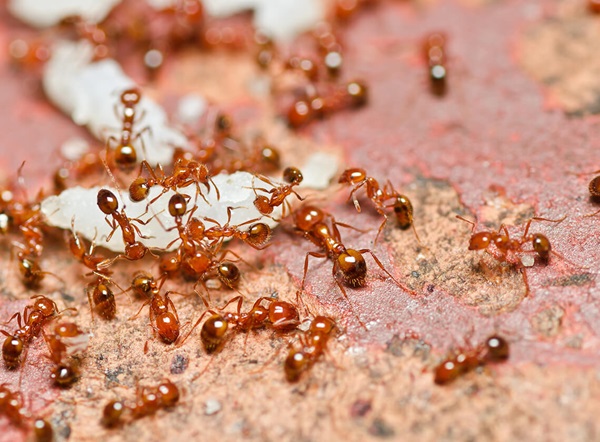



Article by: Hari Yellina
Concerns have been raised that the invasive fire ant, which can construct a raft to float along rivers, may have spread during the record-breaking floods in southern Queensland. The state government said that floodwaters flowed too quickly for insects to survive, but the opposition demanded proof that the risk had been evaluated. Meanwhile, landowners expressed concern that eradication initiatives were not progressing quickly enough. Experts have warned that the microscopic bug could have severe effects if it spreads unchecked and that it might inflict billions of dollars in social, economic, and environmental harm. Early this year, unseasonably heavy rains wreaked havoc in the Lockyer Valley, west of Brisbane, causing two significant floods just ten weeks apart.
Tony Perrett, a member of parliament from Gympie and the LNP’s agriculture spokesman, is concerned about the passage of such floodwater. “We just do not want them to spread farther or, more significantly, remain unnoticed,” he said. Red imported fire ants, frequently referred to as a “super pest,” are well known for having the capacity to not only fly and travel across the ground, but also to float. The National Fire Ant Eradication Program discovered that the ants could raft on water by connecting their claws and trapping air under their bodies, enabling them to float in groups and travel great distances on waterways. In a question on notice, Mr. Perrett questioned the government if it was looking at the risk and whether the ants had spread.
It’s obvious that they claim to have a remarkable ability to withstand floods and can float for weeks before reaching dry land or a location where they can rest once more, he said. “I am therefore very concerned that they have spread, and if that is the case, we must find out.” Agriculture Minister Mark Furner responded that he had been told the floods were coming too quickly for the fire ants to raft. According to the information at hand, the flooding event in 2022 was swift in terms of increases and strong flow rates, which actually decreased the chance of any spread, the expert added.
The present eradication operation involves helicopter-deployed chemical insecticide baits, but several landowners are concerned the method is ineffective and might harm their animals. The proprietors of a horse boarding and training facility in Lockyer Valley worry that the current regulatory mechanisms are ineffectively acting too slowly. On their farm, Atkin Lodge, Joyce Wilkinson and her partner frequently keep up to 60 thoroughbred horses. However, they are concerned about the effects of pesticides dropped from helicopters on their horses and would prefer a focused ground campaign because they do not want the ants to spread. That, according to Ms. Wilkinson, is more in line with what they ought to be doing—actively looking for the locations of these nests.
“When they used to employ the dogs to locate nests, they could actually treat each nest and eradicate the ants inside of it.” Because the ants are hard to see on the ground, Ms. Wilkinson agreed that heat-seeking helicopters were frequently employed to locate the nests. However, she said the low-flying aircraft had an adverse effect on her animals and should only be used seldom. They like to flee from frightening things, and a fence doesn’t necessarily deter them when they’re running, she explained. With a $37.1 million taskforce for the control of fire ants in the budget for this year, Mr. Furner claimed that his government had further strengthened its commitment. “It would take a group effort to defeat the fire ants,” he said. But Mr Perrett said the taskforce’s name indicated a shift away from efforts to eradicate. “We can’t afford to lose this battle,” he said.